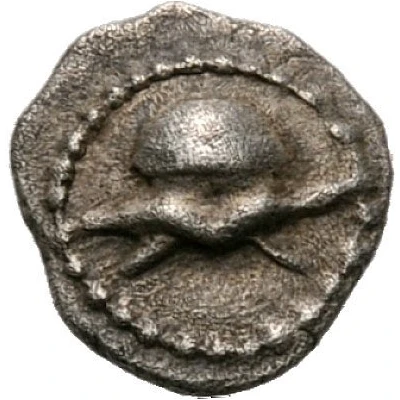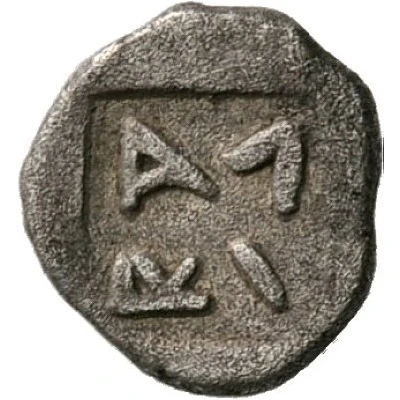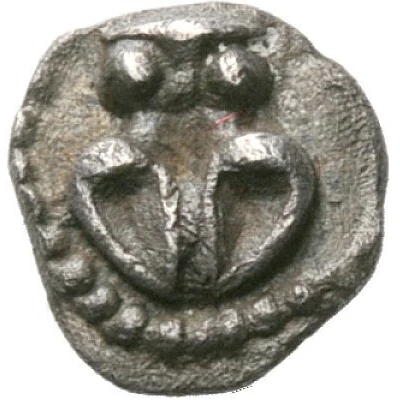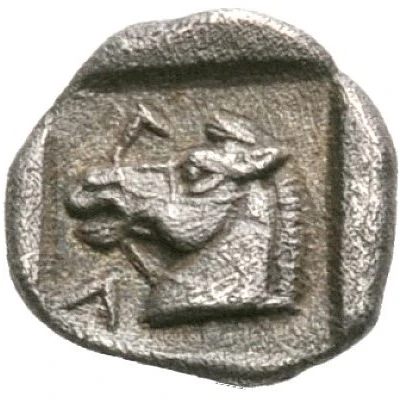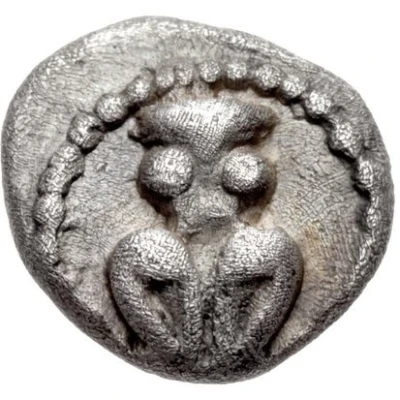
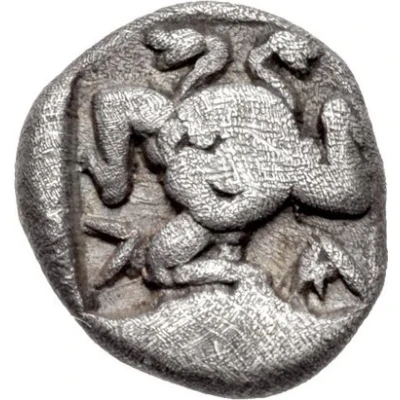

© Classical Numismatic Gallery
Hemiobol 475 BC - 450 BC
| Silver | 0.47 g | 8.0 mm |
| Issuer | Larissa (Thessaly) |
|---|---|
| Type | Standard circulation coin |
| Years | 475 BC - 450 BC |
| Value | Hemiobol (1⁄12) |
| Currency | Drachm |
| Composition | Silver |
| Weight | 0.47 g |
| Diameter | 8.0 mm |
| Shape | Round (irregular) |
| Technique | Hammered, Incuse |
| Orientation | Variable alignment ↺ |
| Demonetized | Yes |
| Updated | 2024-10-10 |
| Numista | N#222836 |
|---|---|
| Rarity index | 100% |
Reverse
Λ-Α below, the Λ on its side, triskeles with the face of a gorgoneion, two snakes emerge from the top of its head, all in incuse square.
Script: Greek
Lettering: Λ Α
Interesting fact
The Hemiobol coin was used as a form of currency in ancient Greece, specifically in the city-state of Larissa (Thessaly) during the 5th century BC. The coin's name "Hemiobol" comes from the Greek words "hēmi-" meaning "half" and "bolos" meaning "thrower," which refers to the coin's value being half that of a full drachma, the standard unit of currency in ancient Greece.
